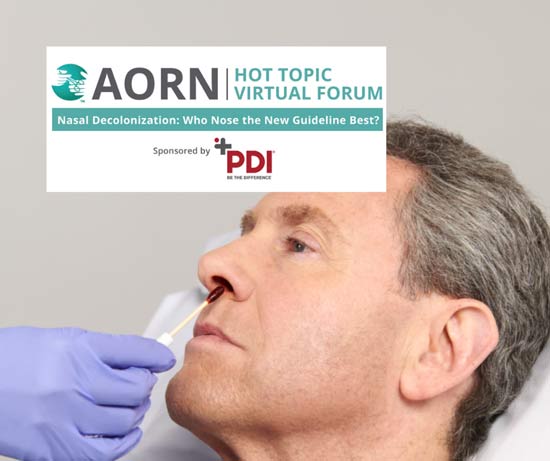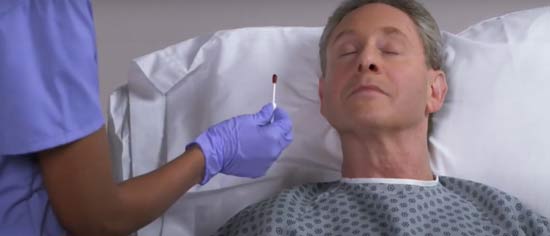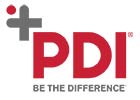A successful program specific to your facility can be developed with education, resources and tools for SSI prevention and positive patient outcomes.
 Credit: AORN + PDI Healthcare
Credit: AORN + PDI Healthcare
PDI partners with AORN for Hot Topic Virtual Forum focused on the new AORN guideline and nasal decolonization, featuring PDI's Profend® Nasal Decolonization Kit.
Nasal decolonization continues to be an ongoing hot topic in the ASC community as surgical teams around the country coordinate their efforts to keep patients safe during surgical experiences, no matter what the procedure or the facility's location. Education is an important way to learn how to reduce the chances of infections, which can lead to complications post-surgery.
Recently, PDI partnered with AORN to host a webinar about the impact of nasal decolonization on reducing skin flora and surgical site infections in two live AORN Hot Topic Virtual Forums on June 8 and June 17. "Nasal Decolonization: Who Nose the New Guidelines Best?" was a lively discussion with a special focus on the newly-released AORN Guideline for Preoperative Patient Skin Antisepsis as well as the benefits of PDI's Profend® Nasal Decolonization Kit.
Speakers Karen deKay, MSN, RN, CNOR, CIC, Perioperative Practice Specialist at AORN, Deva Rea, MPH, BSN, RN, CIC, Clinical Science Liaison at PDI and Marc-Oliver Wright, MT (ASCP), MS, CIC, FAPIC, Clinical Liaison at PDI, presented the attendees important information and practical tips on how to navigate risk-based decisions for developing preoperative nasal decolonization programs at their facilities.
The lively virtual forums reminded attendees why decolonization is so significant as part of an SSI prevention program and offered advice on how to implement a program at their own surgery facilities.
Every location in the country and each surgery center will have different needs, so their administrators will want to customize their program and protocols. Based on the updated AORN Guideline for Preoperative Patient Skin Antisepsis, released in May 2021 (Book publication release in 2022), the risk factors and specific needs of certain populations need to be considered. Screening for resistance, for example, and studies of the local patient population are encouraged.
The PDI speakers offered specific advice about the timing and protocols that would make a nasal decolonization program effective. This included having it become a standing physician order, with no prescription needed, or making it part of a regular nurse-driven protocol.
Deva and Marc-Oliver both defined the elements for successful product implementation and demonstrated that Profend® swabsticks work for all decolonization strategies, including Universal and Targeted. Apply before any type of surgery. Profend® nasal decolonization swabs kill S. aureus immediately and continue protecting for 12 hours achieving 99.9% reduction.1 The 60 second Profend® nasal decolonization swab application is a simple part of the surgical or ICU routine.
Since educating the OR team is so important, PDI offers educational support for the healthcare team through onsite/virtual training, an online training module video, as well as a written Profend® Nasal Decolonization Kit IFU. Each facility can plan for its own protocols as they train staff, integrate a nasal decolonization program into the workflow, and monitor the results. Ultimately, it's the positive patient outcomes that count the most in the long run as patient safety and infection prevention are key for a nasal decolonization program's success.
Note: For more information, please go to https://pdihc.com, or https://pdihc.com/defendwithprofend/ to request a free sample.
 CREDIT: PDI Healthcare
CREDIT: PDI Healthcare.svg?sfvrsn=be606e78_3)



.svg?sfvrsn=56b2f850_5)